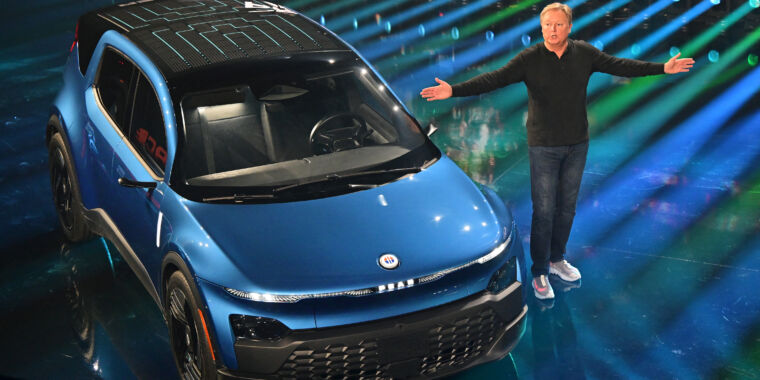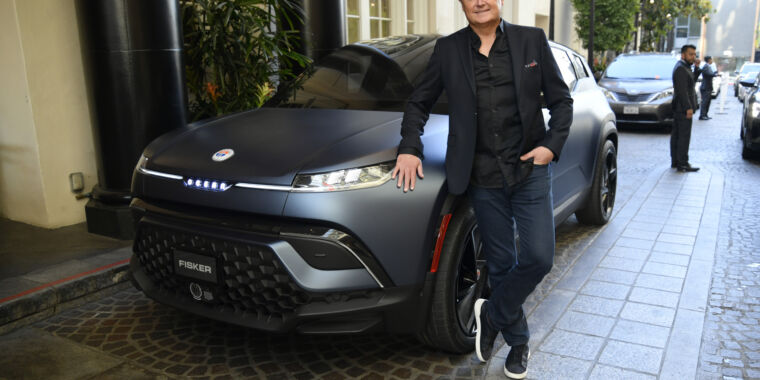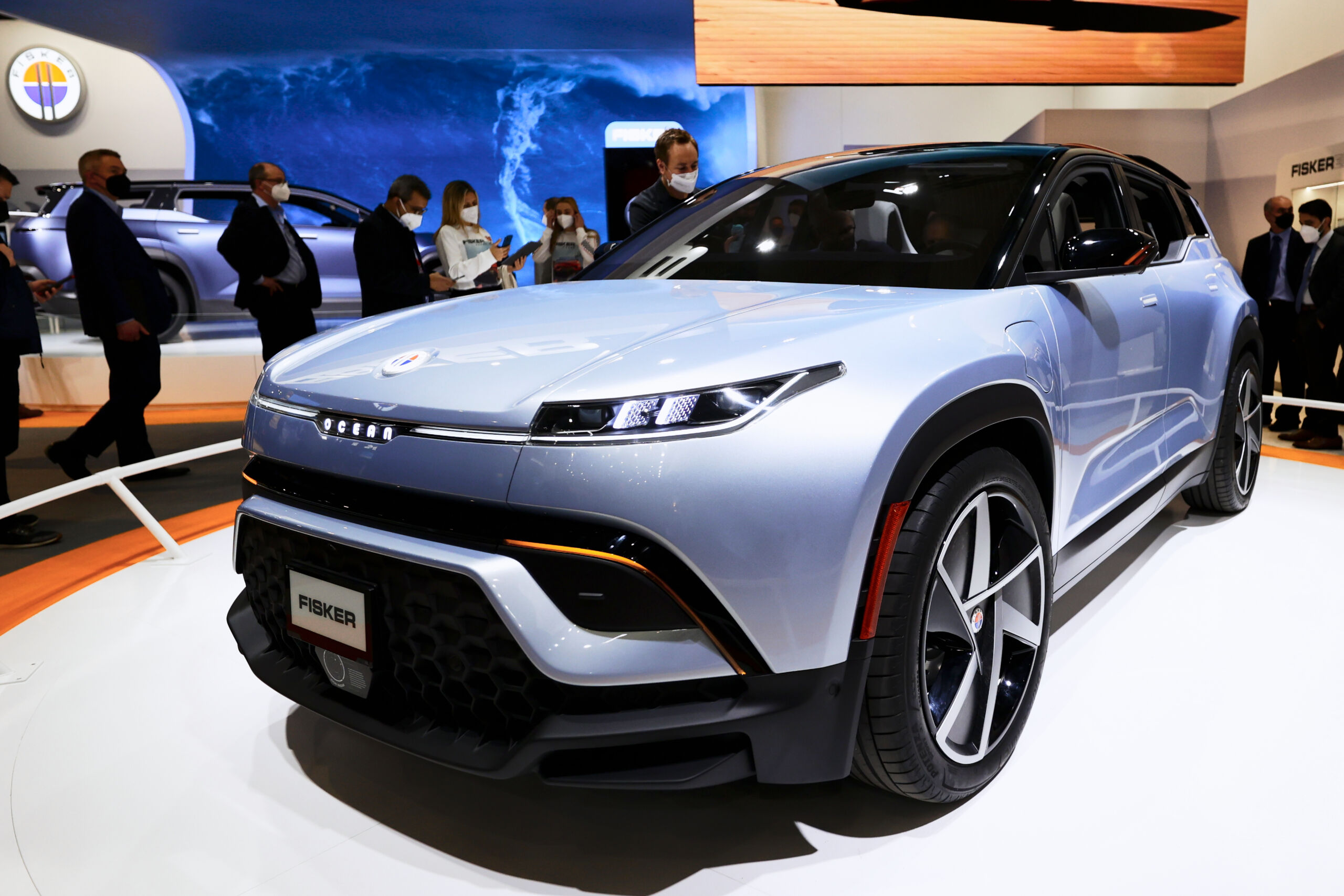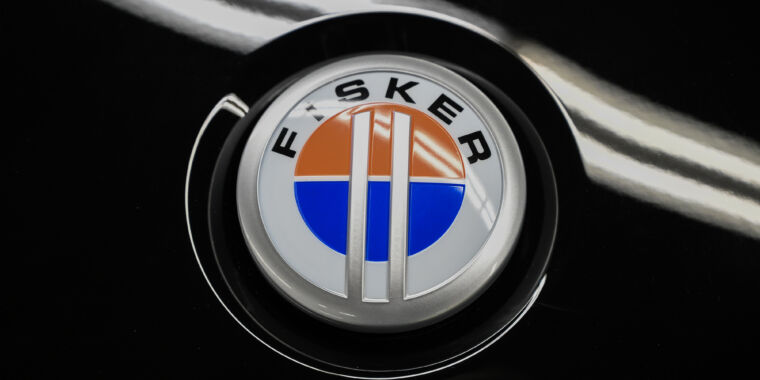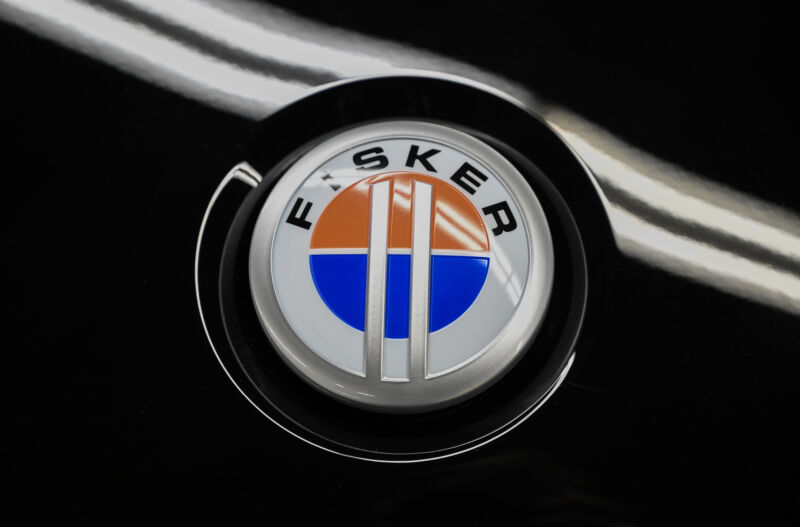Why Fisker’s bankruptcy is likely to leave its EV owners without warranty
Getting Fisked —
Build problems and unmet need for software updates have Fisker owners worried.
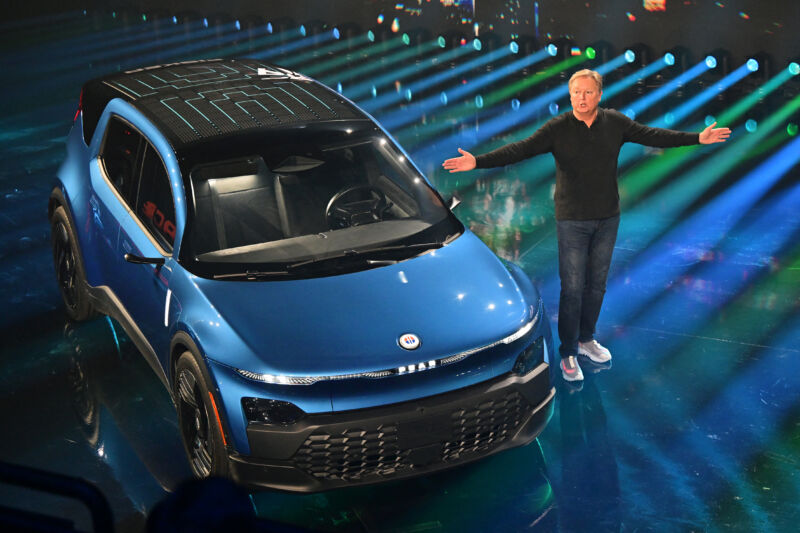
Enlarge / Fisker CEO Henrik Fisker introduces the all-electric compact hatchback Pear during its inaugural “Product Vision Day” in Huntington Beach, California, on August 3, 2023.
It was the last week in June, and José De Bardi hadn’t gotten much sleep. The trouble had really kicked off on June 18, about a week earlier, when the electric vehicle company Fisker announced it had filed for bankruptcy protection. Now some 6,400 Fisker owners like De Bardi wondered: What will happen to their cars in the future?
The bankruptcy “lit a fire,” De Bardi says. “We had to get organized if we had any chance of representing owners’ interests.” Within days, he and a handful of other Fisker vehicle owners had established a nonprofit organization called the Fisker Owners Association, dedicated to keeping their cars running. (Hence, the lack of sleep.) By the end of the month, 1,200 owners—representing nearly a fifth of total Fisker cars sold—had registered through the group’s website, De Bardi says.

Fisker vehicle owners’ questions are mostly practical. Fisker began shipping the Ocean, its electric SUV—priced to start at $41,000 and ranging up to $70,0000—last year. Immediately, the vehicles were found to have serious build quality shortcomings and software issues, including a less-than-responsive central touchscreen. (WIRED’s reviewer declined to rate the vehicle entirely, calling it “just not ready yet.”)
Owners reported that some of the most serious issues, including a difficult-to-use brake hold and Bluetooth connectivity problems, were ironed out through software updates. But owners sometimes complained that it was tricky to get their vehicles serviced or repaired, because there weren’t enough certified Fisker repairers and technicians. Fisker initially launched with a Tesla-like “direct to consumer” model that eschewed the traditional “middleman” dealerships often seen in the US. But in January, the company began to sign dealerships to a new Fisker network, citing ballooning costs associated with the direct model.
Ownership woes
Even now, as the carcass of Fisker gets picked over, the EVs still have niggling problems—window cracks, dysfunctional key fobs, sudden connectivity blackouts—and will unquestionably need servicing and spare parts to keep them running into the future. Without Fisker, the company, to provide that, what are owners to do?
The FOA is still in the early stages of figuring it out. A small band of volunteers have worked around the clock to define the problems owners might face down the road—legal questions about their vehicle financing; issues with the car’s app; finding parts—and start solving them. These people have full-time jobs, too. De Bardi, for example, who lives in the UK and has headed up the European owners’ efforts, is also the CTO of a telecommunications firm.
Experts say Fisker owners’ situation is looking increasingly tricky. Automotive companies have a playbook to handle bankruptcies, developed during the 2008 financial crisis, which led General Motors and Chrysler to file for Chapter 11 protection, as Fisker has. Thanks in part to support from the US government, those automakers were able to honor their vehicles’ warranties as the companies restructured.
But in legal proceedings in Delaware this month, Fisker’s situation looked more dire. Lawyers for the firm’s creditors argued that Fisker should have filed for bankruptcy late last year. And Fisker plans to sell its remaining inventory, some 4,000 vehicles, to a firm that leases electric vehicles to New York City Uber and Lyft drivers, lawyers told the court.
If the company is forced to liquidate this way, owners may not be top of mind for the court and Fisker’s creditors, says John A.E. Pottow, a professor of law who studies bankruptcy at the University of Michigan Law School. The company may simply not have enough money to honor its vehicles’ warranties. “If Fisker is bankrupt, they have no obligation to update their software,” he says. And the company’s assets—its cars, their parts, and its intellectual property—may be too piddling to attract another firm to take up the mantle of service and repair. “Bankruptcy is never good,” Pottow says. “The smaller the business, the worse the issues.”
Right now, Fisker owners should make sure they have great comprehensive insurance on their cars, says Justin Simard, an associate professor of law researching commercial law at Michigan State University College of Law. Without a functioning service and repair system, “you could get totaled out with a little fender bender,” he says. The worst-case scenario might also see Ocean insurance rates increase and the cars’ resale values plummet even further, he says.
Fisker spokesperson Matthew Debord declined to comment on issues related to vehicle repair and parts manufacture, and referred WIRED to the company’s statements related to its Chapter 11 bankruptcy.
Fisker initially paused production of the Ocean in February, after warning investors it might not be able to see out the year. A month later, reported investment talks between the electric vehicle maker and Nissan collapsed, and the fate of Fisker became clearer. The automaker brought in some $273 million in revenue last year but lost $940 million and owes some $850 million to bondholders.
A handful of other electric vehicle makers, including Lordstown Motors, Arrival, and Volta Trucks, have also filed for bankruptcy amid a more-challenging-than-expected climate for electric vehicles and new vehicle development. A fleet maintenance firm agreed to provide service for Lordstown’s remaining fleet customers, while the assets of Arrival sold to another EV manufacturer, Canoo. Volta Trucks emerged from restructuring earlier this year with new ownership and says it will continue to manufacture vehicles.
Despite it all, José De Bardi, the Fisker Owners Association leader, says he wants to keep his black Fisker Ocean around for as long as he possibly can. “It’s now a fantastic car,” he says, acknowledging the EV’s initial “quirks.” Despite the challenges—and hard work—the group is feeling optimistic. “We’re feeling positive that we’re going to get some kind of good outcome,” he says.
This story originally appeared on wired.com.
Why Fisker’s bankruptcy is likely to leave its EV owners without warranty Read More »
